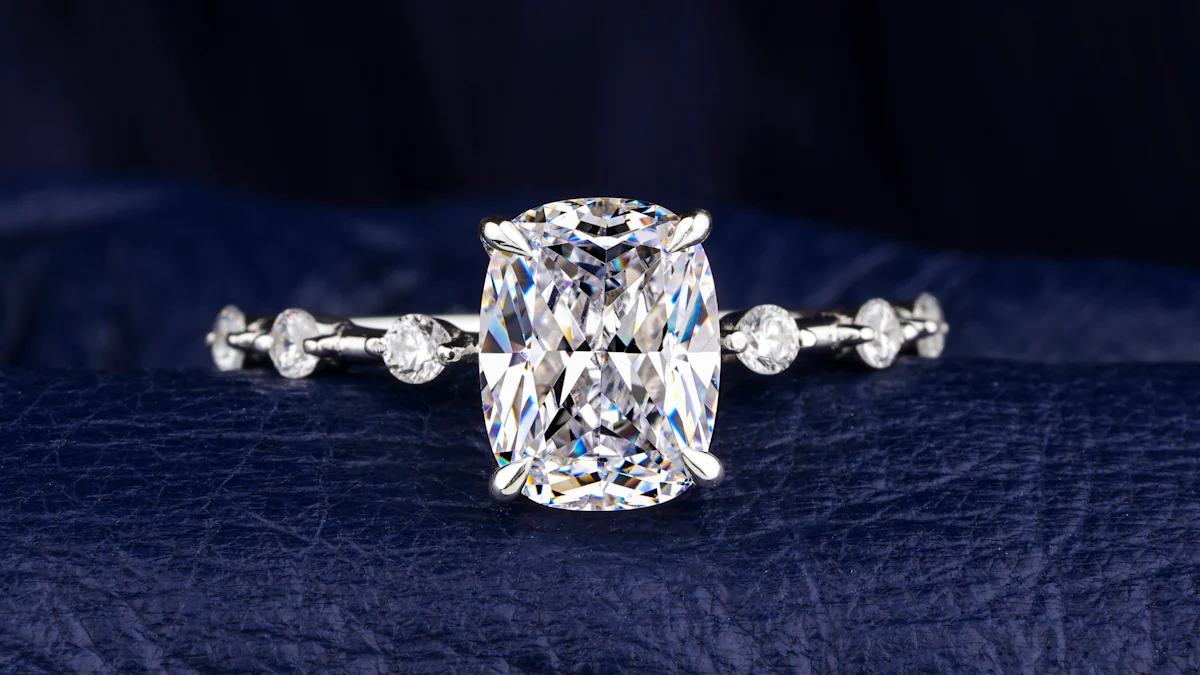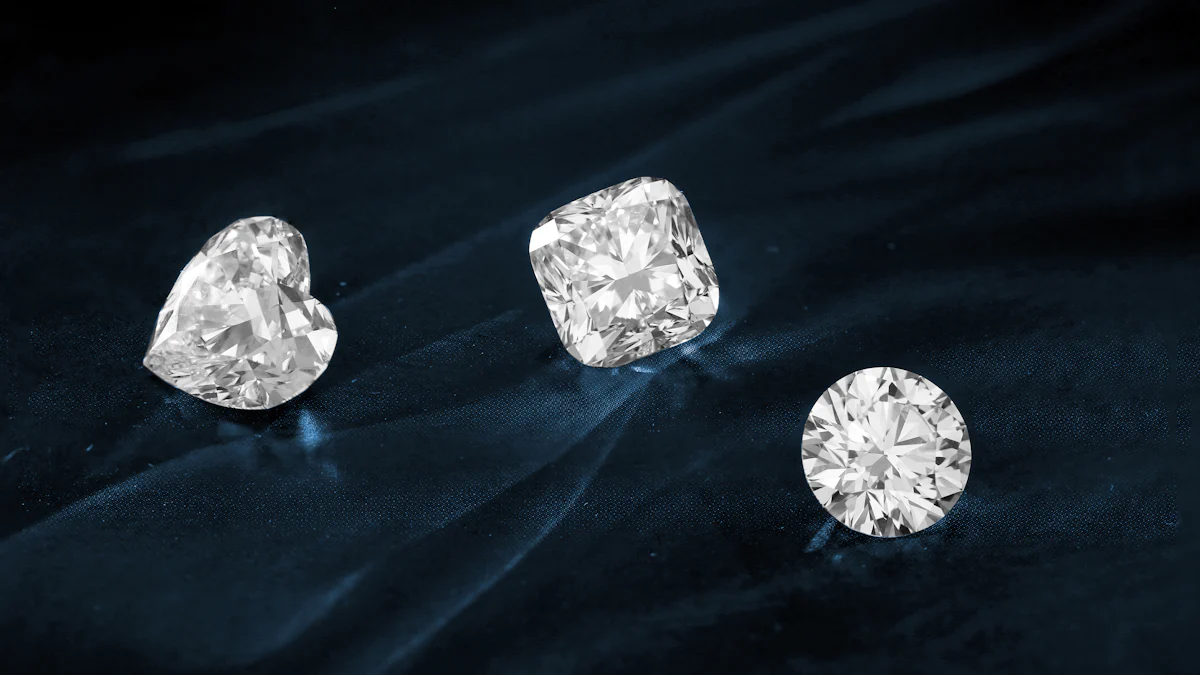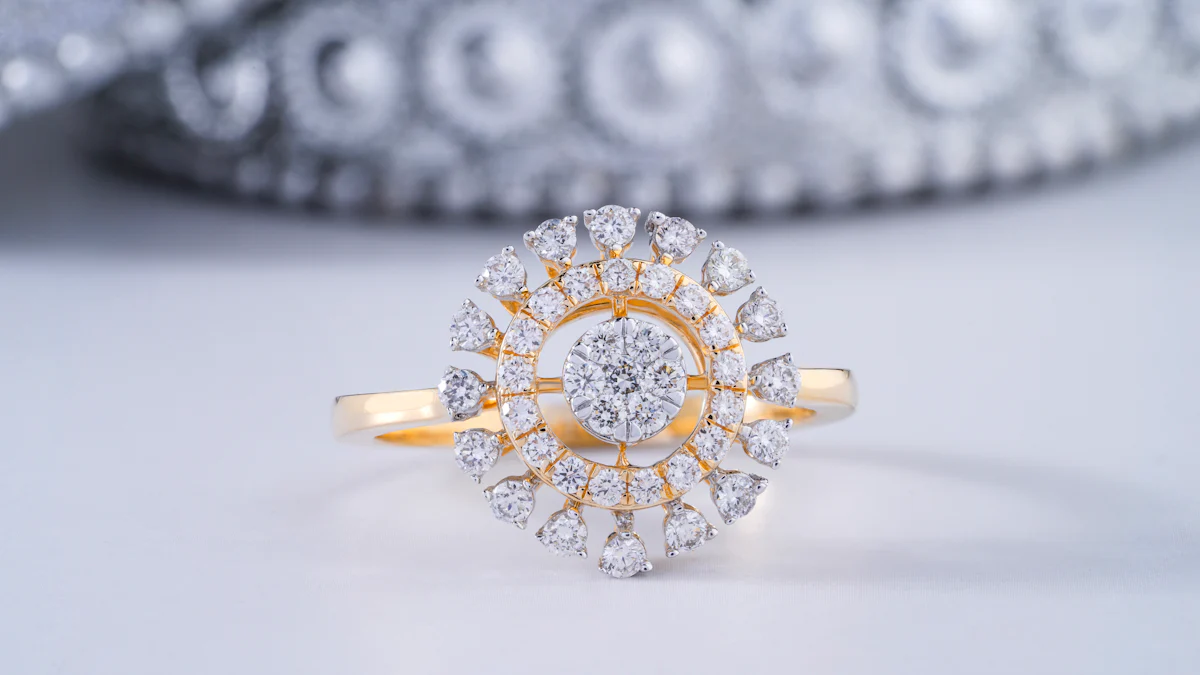Diamond Versus Moissanite: Which Shines Brighter?

When it comes to choosing between diamonds and moissanite, the question often arises: which one shines brighter in the diamond versus moissanite debate? Moissanite boasts a higher refractive index than diamonds, ranging from 2.65 to 2.69, compared to diamond's 2.42. This means moissanite often appears more brilliant and fiery. For engagement rings, selecting the right gemstone is crucial. You want something that not only looks stunning but also aligns with your values and budget. Whether you lean towards the classic allure of diamonds or the dazzling sparkle of moissanite, understanding their differences can guide your decision in the diamond versus moissanite discussion.
Key Takeaways
- Moissanite shines brighter than diamonds due to its higher refractive index, making it a dazzling choice for those who love sparkle.
- Both diamonds and moissanite are durable, but diamonds are the hardest natural substance, while moissanite is a strong and affordable alternative.
- When considering cost, moissanite offers significant savings compared to diamonds, allowing you to get a stunning gemstone without overspending.
- Ethical considerations are crucial; moissanite is lab-created and conflict-free, making it a more sustainable choice than traditionally mined diamonds.
- Understanding the differences in brilliance, durability, and ethical sourcing can help you make an informed decision that aligns with your values and budget.
- Both gemstones come in various cuts and shapes, providing plenty of options to match your personal style and preferences.
- Ultimately, your choice between diamonds and moissanite should reflect your priorities, whether that’s tradition, budget, or ethical considerations.
Appearance

When you're choosing between diamonds and moissanite, their appearance plays a big role. Let's dive into how these two gemstones compare in terms of brilliance, color, and cut.
Brilliance and Fire
Light reflection in diamonds
Diamonds have long been celebrated for their ability to reflect light. Their brilliance comes from their unique structure, which allows them to reflect white light beautifully. This reflection creates a dazzling sparkle that many people adore. However, the diamond's brilliance largely depends on its cut. A well-cut diamond can maximize its light reflection, making it shine brightly.
Light reflection in moissanite
Moissanite, on the other hand, takes light reflection to another level. With a refractive index ranging from 2.65 to 2.69, moissanite often outshines diamonds. This higher refractive index means moissanite reflects more light, resulting in greater brilliance and fire. You'll notice more colorful flashes, known as dispersion, which makes moissanite appear even more vibrant than diamonds. If you're looking for a gemstone that truly sparkles, moissanite might catch your eye.
Color and Clarity
Diamond color grading
Diamonds come in a range of colors, from completely colorless to shades of yellow or brown. The Gemological Institute of America (GIA) grades diamonds on a scale from D (colorless) to Z (light color). A colorless diamond is often more desirable and valuable. However, natural diamonds can have inclusions, which are tiny imperfections that affect clarity.
Moissanite color grading
Moissanite typically exhibits a near-colorless appearance. Since it's lab-created, moissanite often has fewer inclusions, resulting in higher clarity. You might find that moissanite maintains its clarity and color over time, making it an appealing choice if you want a gemstone that stays pristine.
Cut and Shape Options
Popular diamond cuts
Diamonds offer a variety of cuts and shapes to suit different tastes. Some popular diamond cuts include round, princess, emerald, and oval. Each cut has its own way of reflecting light, contributing to the diamond's overall brilliance. The round cut, for instance, is known for its exceptional sparkle.
Popular moissanite cuts
Moissanite also comes in various cuts and shapes, similar to diamonds. You can find moissanite in round, cushion, pear, and radiant cuts, among others. These cuts enhance moissanite's natural brilliance and fire, making it a versatile option for those who appreciate a bit of extra sparkle.
In the diamond versus moissanite debate, both gemstones offer unique qualities. Whether you prefer the classic allure of diamonds or the vibrant sparkle of moissanite, understanding these differences can help you make an informed choice.
Durability

When you're picking a gemstone for your jewelry, durability is a key factor. You want something that can withstand daily wear and tear. Let's explore how diamonds and moissanite stack up in terms of hardness and resistance to scratching and chipping.
Hardness
Mohs scale rating for diamonds
Diamonds are renowned for their incredible hardness. They score a perfect 10 on the Mohs scale, making them the hardest natural substance on Earth. This exceptional hardness means diamonds resist scratches from almost any other material. If you're looking for a gemstone that can handle life's bumps and scrapes, diamonds are a top choice.
Mohs scale rating for moissanite
Moissanite isn't far behind diamonds in terms of hardness. It scores between 9.25 and 9.5 on the Mohs scale. While not as hard as diamonds, moissanite is still one of the hardest substances available. This makes it highly resistant to scratches and suitable for everyday wear. If you're considering moissanite, you can feel confident in its ability to stand up to daily use.
Resistance to Scratching and Chipping
Durability of diamonds
Diamonds don't just excel in hardness; they're also incredibly durable. Their toughness allows them to resist chipping and breaking, even with frequent use. This durability makes diamonds a popular choice for engagement rings and other jewelry pieces that see a lot of action. You can trust a diamond to maintain its beauty over time.
Durability of moissanite
Moissanite also offers impressive durability. While it's slightly less hard than diamonds, it still resists scratches and chips effectively. Moissanite's strength makes it a practical and affordable alternative to diamonds. You won't have to worry about it losing its luster or getting damaged easily. For those who want a durable gemstone without the diamond price tag, moissanite is a fantastic option.
In the diamond versus moissanite debate, both gemstones offer remarkable durability. Whether you choose the unmatched hardness of diamonds or the resilient nature of moissanite, you can enjoy a gemstone that stands the test of time.
Cost
When you're deciding between diamonds and moissanite, cost is a major factor. Let's break down the price differences and see which gemstone offers more value for your money.
Price Comparison
Average cost of diamonds
Diamonds are known for their high price tags. The cost of a diamond depends on several factors, including carat weight, cut, color, and clarity. On average, a one-carat diamond can set you back several thousand dollars. This price reflects the rarity and natural beauty of diamonds. If you're considering a diamond, be prepared for a significant investment.
Average cost of moissanite
Moissanite, on the other hand, offers a more budget-friendly option. Since it's lab-created, moissanite costs significantly less than diamonds. You can expect to pay a fraction of the price for a moissanite stone of similar size and appearance. This affordability makes moissanite an attractive choice for those who want a stunning gemstone without breaking the bank.
Cost-Effectiveness
Long-term value of diamonds
Diamonds hold their value well over time. Their rarity and desirability contribute to their long-term worth. If you choose a diamond, you can expect it to retain its value, making it a potential heirloom piece. However, this long-term value comes with a higher initial cost.
Long-term value of moissanite
Moissanite offers excellent value for its price. While it may not hold the same resale value as diamonds, moissanite provides a cost-effective alternative with its brilliant sparkle and durability. You get a gemstone that looks stunning and lasts for years, all at a fraction of the cost of a diamond. For many, the immediate savings and beauty of moissanite outweigh the potential long-term value of diamonds.
In the diamond versus moissanite debate, your choice may come down to budget and personal preference. Both gemstones offer unique qualities and benefits. Whether you prioritize the timeless allure of diamonds or the cost-effective brilliance of moissanite, understanding these differences can help you make an informed decision.
Ethical Considerations
When choosing between diamonds and moissanite, ethical considerations play a significant role. You want to ensure that your choice aligns with your values and contributes positively to the world.
Environmental Impact
Mining practices for diamonds
Diamond mining can have a substantial environmental impact. Traditional mining methods often involve large-scale excavation, which disrupts ecosystems and landscapes. These practices can lead to deforestation, soil erosion, and water pollution. As a result, diamond mining can harm local communities and wildlife. If you're concerned about the environment, it's essential to consider the ecological footprint of diamond mining.
Production of moissanite
Moissanite offers a more eco-friendly alternative. Since it's lab-created, moissanite production doesn't involve mining. This process significantly reduces its environmental impact. By choosing moissanite, you support sustainable practices in the jewelry industry. You can enjoy a stunning gemstone while knowing it has a minimal effect on the planet.
Social Responsibility
Ethical sourcing of diamonds
The diamond industry has faced criticism for its involvement in conflict diamonds, also known as "blood diamonds." These diamonds are mined in war zones and sold to finance armed conflict against governments. The trade of conflict diamonds has led to human rights abuses and suffering. To address this issue, the Kimberley Process Certification Scheme was established to prevent the flow of conflict diamonds. However, not all diamonds are conflict-free, so it's crucial to verify the ethical sourcing of any diamond you consider.
Ethical considerations for moissanite
Moissanite provides peace of mind when it comes to social responsibility. As a lab-created gemstone, moissanite is entirely conflict-free. You won't have to worry about contributing to human rights issues or supporting unethical practices. By choosing moissanite, you make a positive impact on the planet and its people. You can wear your jewelry with pride, knowing it aligns with your values.
In the diamond versus moissanite debate, ethical considerations are vital. Whether you prioritize the environmental impact or social responsibility, understanding these factors can guide you in making a choice that reflects your principles.
In the diamond versus moissanite debate, each gemstone shines in its own way. Diamonds offer timeless appeal and high resale value, while moissanite provides brilliant sparkle and affordability. Your choice depends on personal preferences, budget, and values. Consider tradition, sustainability, and what truly matters to you. Whether you lean towards the classic allure of diamonds or the ethical and cost-effective nature of moissanite, make a decision that aligns with your priorities. Ultimately, your happiness and satisfaction with your choice are what truly count.
FAQ
What is Moissanite?
Moissanite is a beautiful and durable alternative to traditional diamonds in fine jewelry. Many people have questions about this gemstone. Here, you'll find answers to some of the most frequently asked questions to help you make an informed decision about your next jewelry purchase.
How does Moissanite compare to diamonds in terms of brilliance?
Moissanite often outshines diamonds due to its higher refractive index. This means it reflects more light, resulting in greater brilliance and sparkle. If you love a gemstone that catches the eye with its fiery display, moissanite might be the perfect choice for you.
Is Moissanite as durable as a diamond?
While diamonds are the hardest natural substance, moissanite is not far behind. It scores between 9.25 and 9.5 on the Mohs scale, making it highly resistant to scratches and suitable for everyday wear. You can trust moissanite to withstand daily use without losing its luster.
Why is Moissanite more affordable than diamonds?
Moissanite is lab-created, which significantly reduces its cost compared to natural diamonds. This affordability makes it an attractive option for those who want a stunning gemstone without the hefty price tag. You get the beauty and durability of a high-quality stone at a fraction of the cost.
Can Moissanite be used in engagement rings?
Absolutely! Moissanite is a popular choice for engagement rings due to its brilliance, durability, and affordability. It offers a dazzling alternative to diamonds, allowing you to have a beautiful ring that fits your budget and style.
Does Moissanite change color over time?
Moissanite maintains its clarity and color over time. Unlike some gemstones, it does not change color or become cloudy. You can enjoy its pristine appearance for years, making it a reliable choice for long-lasting jewelry.
Is Moissanite ethically sourced?
Yes, moissanite is entirely conflict-free. As a lab-created gemstone, it does not involve mining practices that can harm the environment or contribute to human rights issues. Choosing moissanite supports sustainable and ethical practices in the jewelry industry.
How can I tell the difference between Moissanite and a diamond?
Moissanite and diamonds can look very similar, but there are a few ways to tell them apart. Moissanite typically weighs less than diamonds and has a higher refractive index, resulting in more sparkle. A professional jeweler can also help you identify the differences using specialized tools.
Are there different cuts available for Moissanite?
Yes, moissanite comes in various cuts and shapes, similar to diamonds. You can find popular cuts like round, cushion, pear, and radiant. These cuts enhance moissanite's natural brilliance, giving you plenty of options to match your personal style.
Can Moissanite be resized or repaired like a diamond?
Moissanite can be resized and repaired just like a diamond. Jewelers can work with moissanite to adjust ring sizes or fix any damage. You can enjoy the flexibility of customizing your moissanite jewelry to fit your needs.
See Also
Comparing Tungsten Diamond Rings With Traditional Options
A Guide to Diamond Cuts for Engagement Rings
Price Comparison of Various Diamond Necklace Styles

